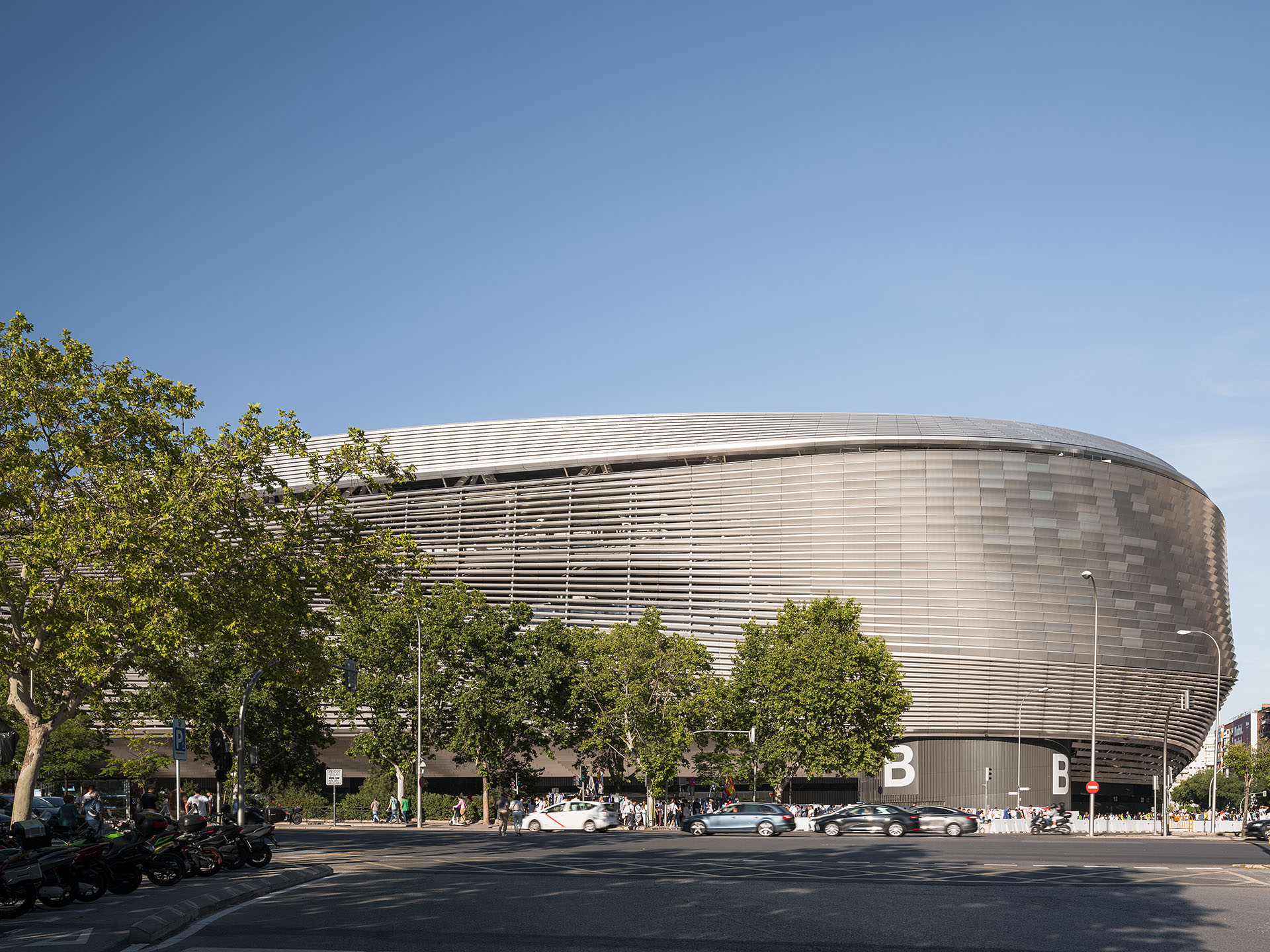
The remodelling of Real Madrid CF’s Santiago Bernabéu Stadium is nearing completion, over 12 years since work began. A team of architects led by Madrid-based studio L35, comprising Hamburg’s GMP Architekten and Barcelona’s Ribas & Ribas, was tasked with recalibrating the stadium’s relationship with its surroundings and enhancing its public-facing function, as part of a renovation estimated to have cost €1.76 billion.
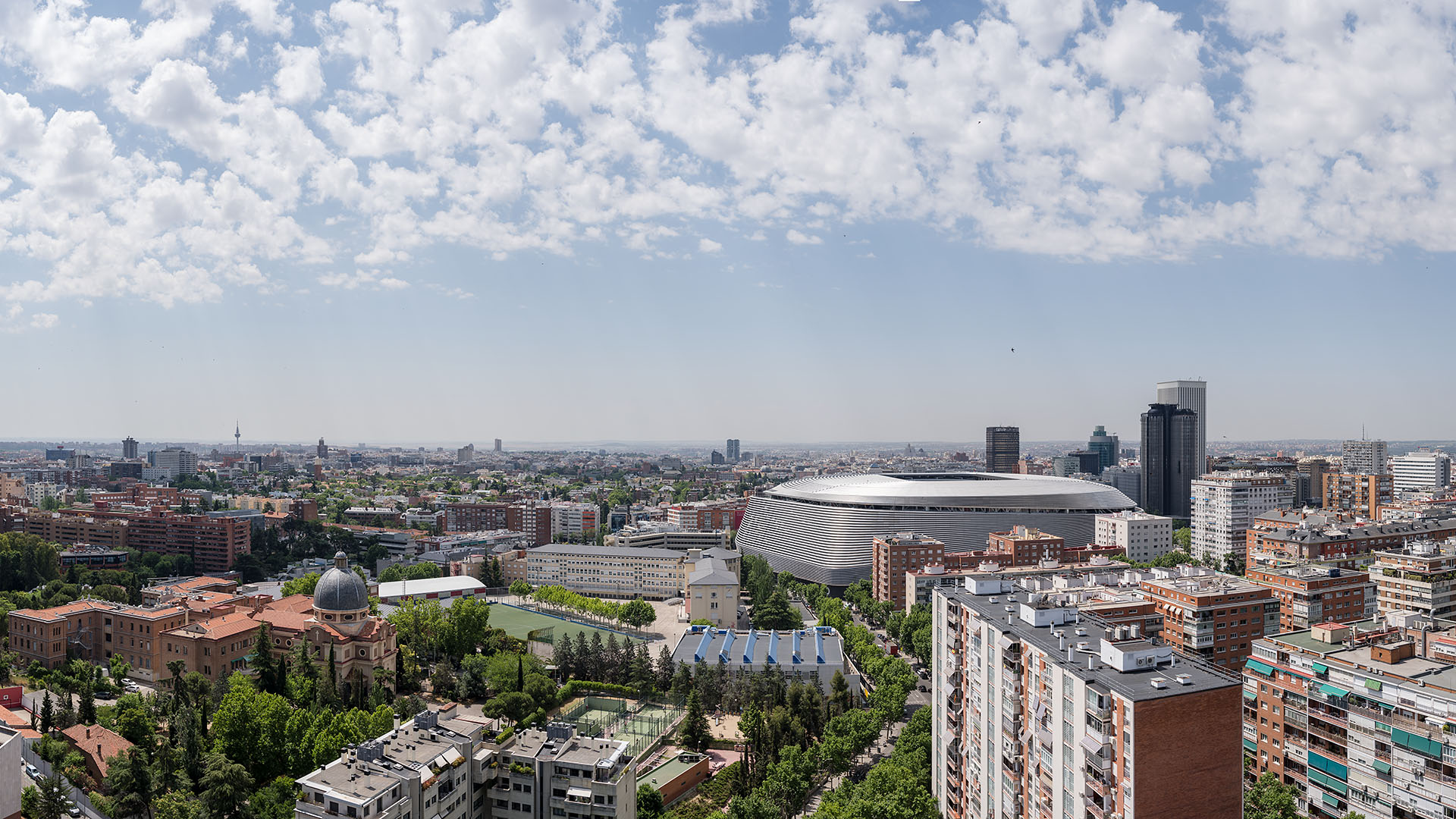
Tour the Santiago Bernabéu stadium in Madrid
Football lovers in the Spanish capital have already been enjoying new features at the stadium, which now spans 175,000 sq m, including its state-of-the-art retractable pitch – stored between matches in 25m-deep underground chambers – and a retractable roof that regulates noise and climatic conditions.
Now, the architects’ finishing touches will solidify the stadium’s new incarnation as a more accessible space for leisure, culture and community.
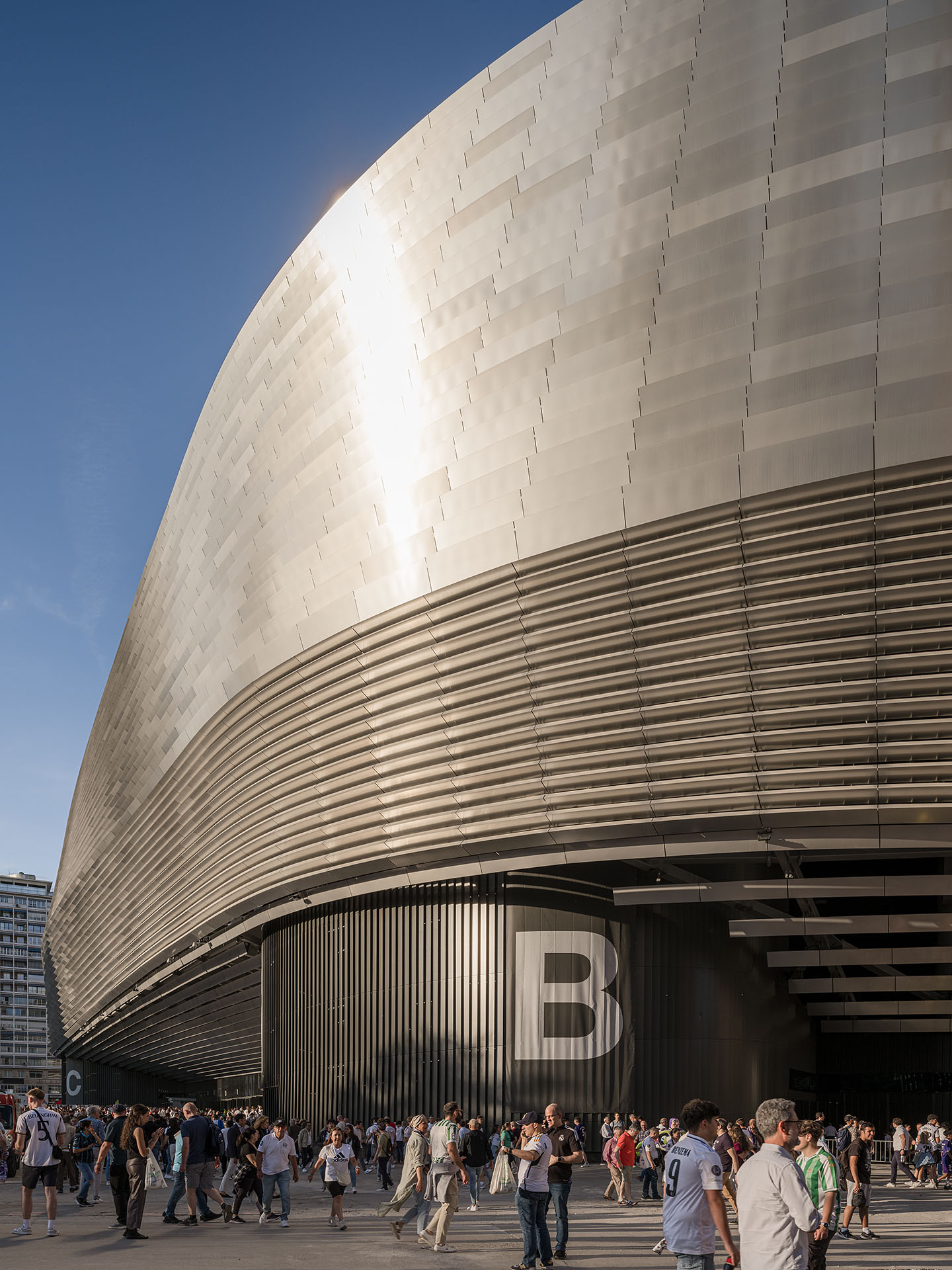
Although it had 57 entry points, the architects felt the lack of a principal gateway to welcome visitors with a weightiness befitting the Bernabéu, which has stood as a symbol of Madrid’s sporting prowess since 1947. 'The stadium is embedded in the city – it’s been there longer than everything surrounding it,' says Tristán López-Chicheri, CEO of L35, whose portfolio also includes Simón Bolívar stadium in La Paz and the El Campín complex in Bogotá. 'We’ve generated space for access that brings formality to this building.'
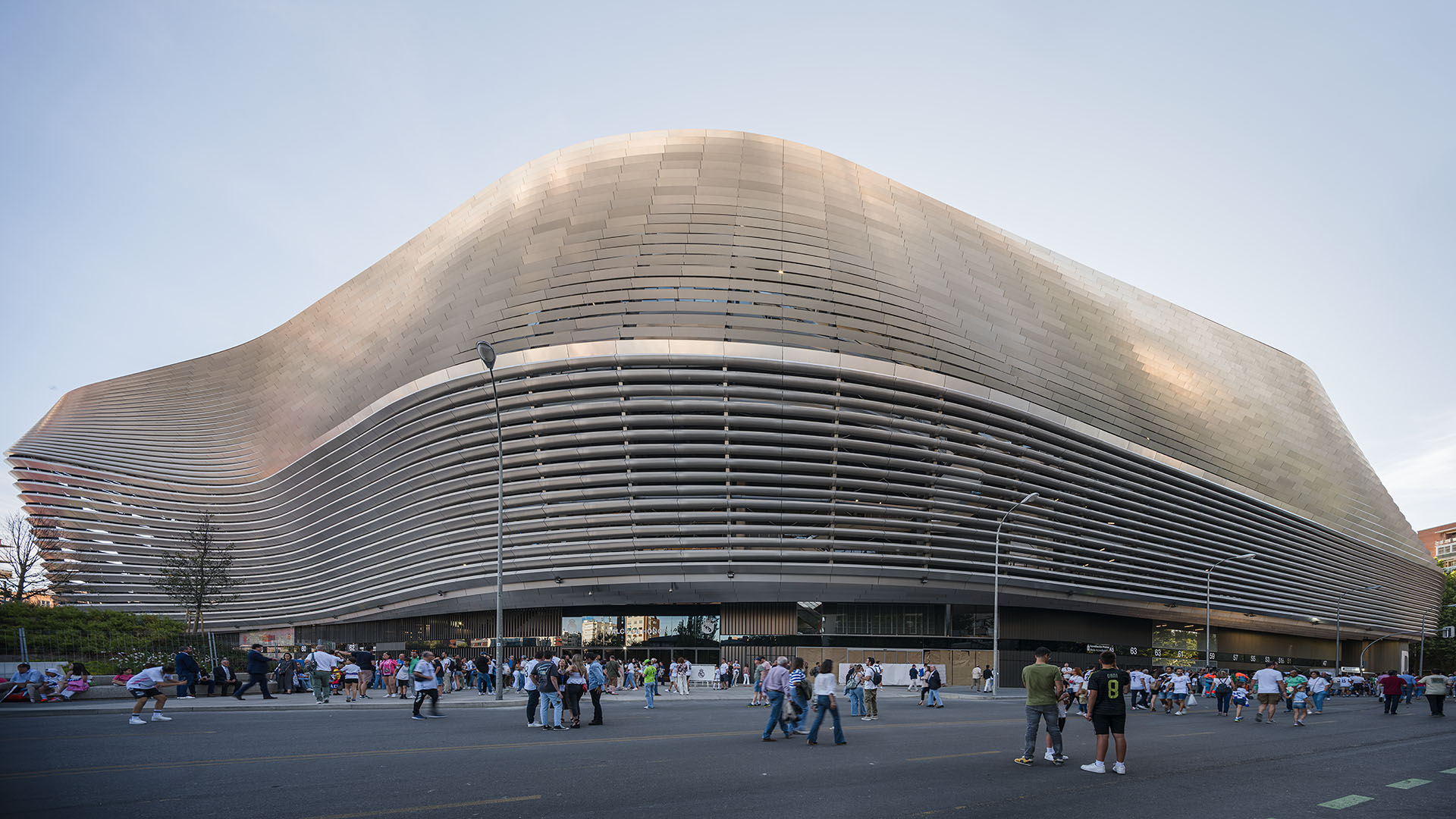
When it opens, this new entrance on Paseo de la Castellana – a major thoroughfare extending from central to northern Madrid – will offer a direct view to the football pitch. The new façade has added 15m of depth inside, creating zones for leisure, rest and events, as well as a new space for the football club’s museum. By shifting the position of two principal supporting towers, the architects have also allowed for more fluid pedestrian movement around the stadium.
To the east of the site, a former shopping centre has been demolished to make space for a public square set across two levels, including the entrance to a food court. New vehicle entrance points at this plaza now lead team and staff vehicles down into parking facilities below the stadium, while a new underground logistics tunnel enables swifter circulation of services.
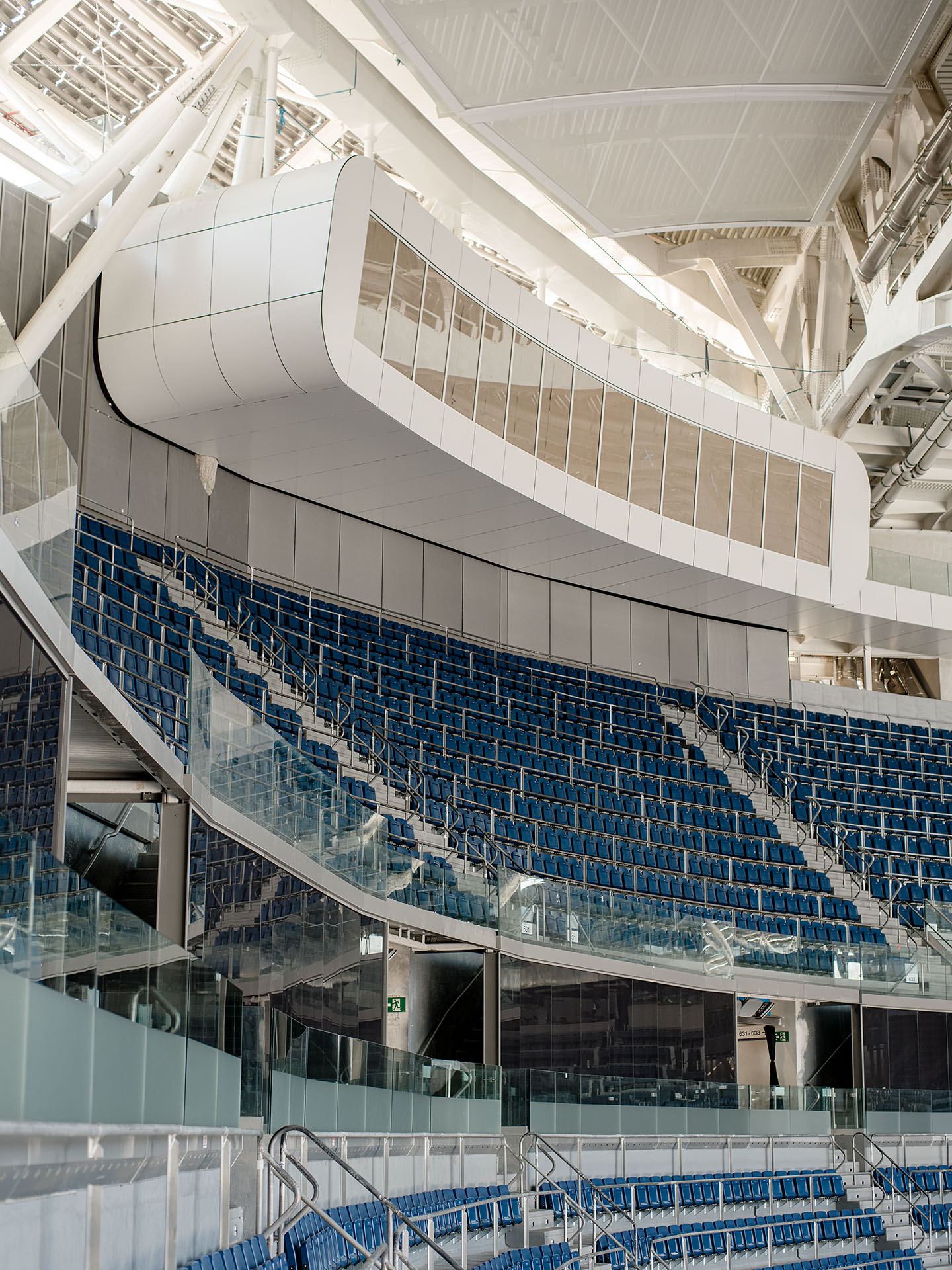
Ahead of the redesign’s full completion, the stadium’s new exterior has already provided Madrileños with an impressively revamped local landmark, with horizontal, reflective stainless steel strips that wrap around the structure, creating a dynamic sense of movement. The undulating shape of this new curved façade is designed to reduce the impact of the building’s volume, explains L35 architect Guillermo Gusó García: the stadium is now 57m tall but its shape means the perceived size and scale change according to the movement of the outside viewer.







